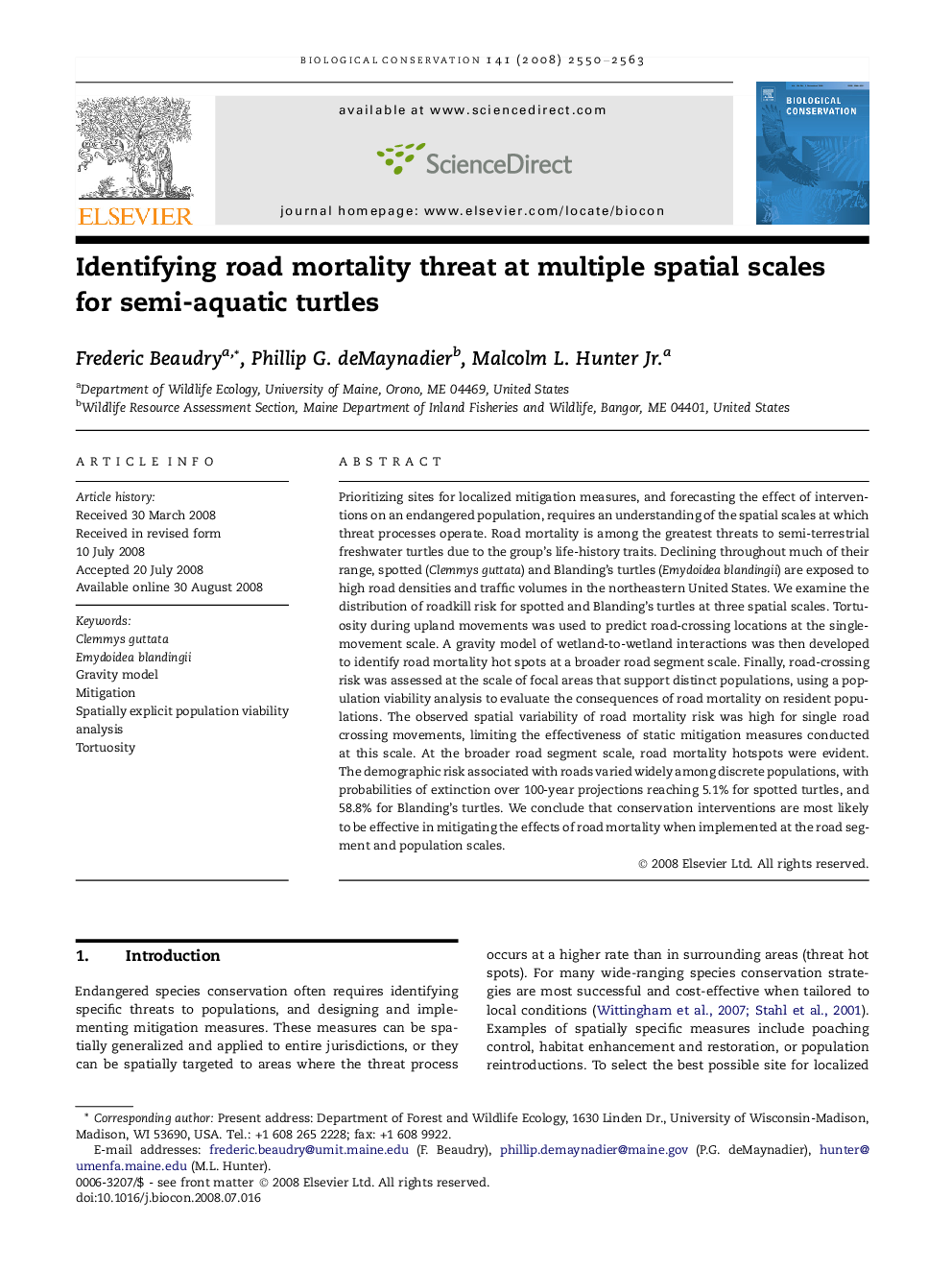| Article ID | Journal | Published Year | Pages | File Type |
|---|---|---|---|---|
| 4386641 | Biological Conservation | 2008 | 14 Pages |
Abstract
Prioritizing sites for localized mitigation measures, and forecasting the effect of interventions on an endangered population, requires an understanding of the spatial scales at which threat processes operate. Road mortality is among the greatest threats to semi-terrestrial freshwater turtles due to the group's life-history traits. Declining throughout much of their range, spotted (Clemmys guttata) and Blanding's turtles (Emydoidea blandingii) are exposed to high road densities and traffic volumes in the northeastern United States. We examine the distribution of roadkill risk for spotted and Blanding's turtles at three spatial scales. Tortuosity during upland movements was used to predict road-crossing locations at the single-movement scale. A gravity model of wetland-to-wetland interactions was then developed to identify road mortality hot spots at a broader road segment scale. Finally, road-crossing risk was assessed at the scale of focal areas that support distinct populations, using a population viability analysis to evaluate the consequences of road mortality on resident populations. The observed spatial variability of road mortality risk was high for single road crossing movements, limiting the effectiveness of static mitigation measures conducted at this scale. At the broader road segment scale, road mortality hotspots were evident. The demographic risk associated with roads varied widely among discrete populations, with probabilities of extinction over 100-year projections reaching 5.1% for spotted turtles, and 58.8% for Blanding's turtles. We conclude that conservation interventions are most likely to be effective in mitigating the effects of road mortality when implemented at the road segment and population scales.
Keywords
Related Topics
Life Sciences
Agricultural and Biological Sciences
Ecology, Evolution, Behavior and Systematics
Authors
Frederic Beaudry, Phillip G. deMaynadier, Malcolm L. Jr.,
